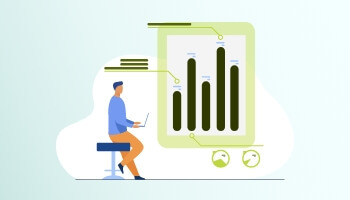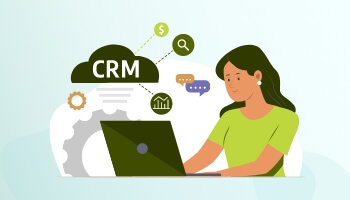The key to success in account-based marketing (ABM) is having the right tools. These tools will help you scale ABM programs and provide critical insights to make crucial decisions.
Account-based marketing services help screen out low-value clients early on. It guarantees that marketing and sales are on the same page, allowing the team to begin engaging and delighting those accounts immediately.
A tech stack, also known as a “solutions stack,” is a set of technologies that a corporation uses to create and maintain an application or project. It comprises programming languages, frameworks, databases, front-end and back-end tools, and API-connected apps.
TechStack is crucial in ABM as it replaces costly systems by providing all you need in one tool. As a result, there are fewer costs and more valuable insights. Techstack gives a complete picture of your customer’s journey from lead through opportunity, contract, project, support, and subscription renewal.
ABM enables the company to engage with high-value clients as separate marketplaces. You will see a higher return on investment and increased customer loyalty if you customise the buyer’s experience and adapt all messages, content, and campaigns to those individual accounts.
To help you get started, here is a list of six essential tech stack products for ABM:
1. Visitor Intelligence Software


Customer data access is the lifeblood of ABM tactics. For example, you may get extensive information on who is visiting your website and on which pages they are spending time using software from firms like Clearbit or Kickfire. Your targeting will be significantly less accurate without this data, inhibiting your campaign from achieving a higher ROI.
2. Analytics Platform


Interaction indicators, such as average session time, bounce rate, pages per session, and high-level demographic data, are stored in analytics systems. They can also be linked to other components of your campaign, for example, Google Analytics.
In addition, marketers can connect Google Analytics and Google Search Console directly to analyse the impact of organic traffic and diagnose keyword-specific interaction at the page level, allowing for fine-tuning the SEO strategy.
The analytics software provides account-based marketing analytics, such as the percentage of target accounts achieved or lead-to-account mapping, to evaluate the success of a user’s account-based marketing (ABM) strategy.
ABM methods are beneficial to a company because they allow marketing teams to focus their efforts on prospects who are likely to convert. Marketing teams may use Account-Based Analytics solutions to evaluate the effectiveness of their ABM approach and verify that they are targeting the right prospects.
3. CRM


Customer Relationship Management (CRM) software is the most critical technology for your company’s success. CRM software consolidates your contact information into a single, easy-to-use database. This database contains data regarding leads, customers, and anybody else you need to contact.
We can determine the best accounts to target using CRM data. Then, during an ABM campaign, you leverage your unified solution’s marketing automation tools to establish rigorously specified workflows that drive your outreach and internal procedures.
A CRM becomes your company’s one source of truth. If you don’t already have a CRM in place, getting one will boost your productivity significantly. In addition, you will naturally have better organisational alignment once you have established a CRM and have your staff use it as part of your company’s everyday operations.
The same system will be used by your entire marketing, sales, and service team, thus ensuring that real-time data is available to everyone. Companies can obtain more accurate and valuable results from such real-time data.
4. Content Enablement


Omnichannel ABM approaches necessitate a degree of personalisation from your marketing team that requires time and effort. Increase engagement and demonstrate your comprehension and knowledge of the accounts you’re seeking by personalising content and landing pages to represent the audience on a granular level. Personalisation can be time-consuming, but most of the work is done for you with a content enablement tool.
5. Data Visualisation


Data visualisation involves transforming information into a visual representation, such as a graph, to make data easier to interpret and extract insights. The data visualisation’s primary goal is to make it easier to see patterns, trends, and outliers in large data sets. The words “information graphics,” “information visualisation,” and “statistical graphics” are commonly interchanged.
Data visualisation is a subset of data presentation architecture that aims to identify, locate, change, format, and communicate data in significantly less time. A clear image of campaign performance is necessary to understand the success of the campaign strategy, and everyone can comprehend a numbers-based, unbiased perspective of campaign activities using data visualisation. This degree of transparency leads to a better understanding of the potential and weaknesses in your ABM ecosystem.

6. Marketing Automation


You may begin implementing successful marketing automation after having a good CRM. Most marketing automation solutions work by triggering a sequence of actions. For example, when a prospect schedules a meeting, they will receive an email confirming their appointment time. The prospect’s name, the location of the meeting, and the sales representative’s contact information will all be included in this email. Furthermore, marketing automation systems collect pertinent information from the CRM to include tailored content in each email.
Executing digital marketing campaigns that target important accounts becomes more accessible after the digital marketing agency has prepared the marketing material and laid out the procedures. The marketing team can send a relevant offer to encourage a decision-maker to opt-in to subsequent marketing messages (such as a webinar or guide). After accepting the offer, the prospect will begin to get more marketing communications pertinent to the request and speak directly to their requirements.
In their CRM, sales and marketing teams may observe that candidates respond effectively to marketing materials and prioritise subsequent outreach due to good automation. This will assist your staff in recognising the critical importance of entering information into your CRM, regardless of the CRM you use.
Conclusion
Account-based marketing (ABM) is a B2B marketing strategy that uses the same concentration as certain sales teams when selling to specific accounts. ABM focuses on the marketing and sales activities for a select group of important clients. It is important to remember that your business needs a group of experts who can run a successful ABM campaign even with these tools.
Amura Marketing Technologies is a leading growth marketing agency that specialises in ABM marketing. We can help you increase the overall productivity of your organisation with the help of the tools mentioned above by curating a customised ABM marketing strategy that meets your needs.
An account-based marketing strategy relies on the correct combination of marketing technologies to expand effectively. Thus, it is critical to remember that these marketing tactics will come to fruition when advanced technologies back them and automation.

